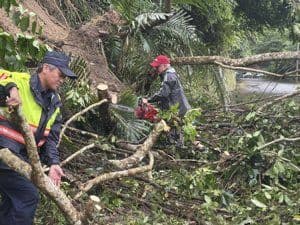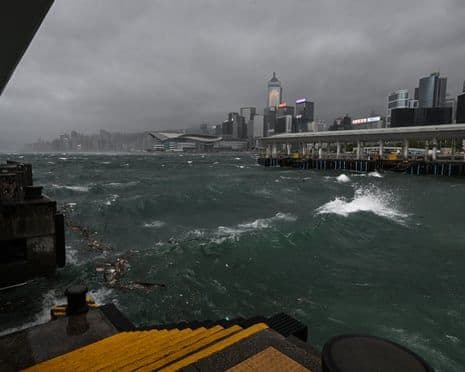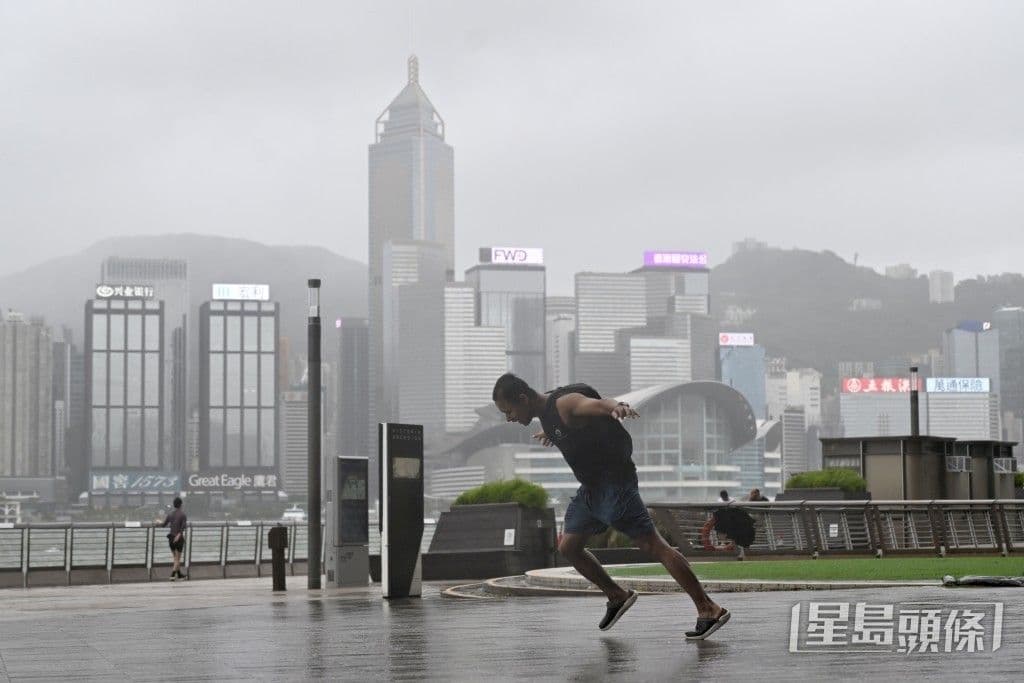Taichung's Unexpected Fountains: A City's Reckoning with Rising Waters
Taichung's recent floods, marked by surreal street 'fountains,' highlight urban infrastructure's climate challenge. Explore resilience, planning, and future adaptations.
The Night the City Transformed: Sudden Deluge and Striking Impacts
Just recently, experienced a night that indelibly altered its urban landscape, turning familiar streets into scenes of disarray. An unprecedented downpour, described by meteorologists as 'disastrous rain,' descended upon the city, particularly impacting central and southern . As the evening progressed on July 30th, 2025, the rain intensified, accompanied by a dramatic display of lightning and thunder that some residents likened to a full-blown concert – albeit one with a terrifying soundtrack. National emergency alerts buzzed across cell phones, warning citizens of a severe thunderstorm expected to rage until the early hours of the morning. The sheer volume of water quickly overwhelmed drainage systems. In a surreal spectacle, manhole covers across the city burst forth, transforming ordinary roads into impromptu fountains, their gushing waters a stark visual testament to the infrastructure's struggle. Beyond the city proper, the mountainous district witnessed unsettling landslides, where torrents of mud and debris blocked roads, forcing immediate police intervention and road closures. This sudden deluge laid bare the immediate and striking vulnerabilities of a bustling metropolis facing nature's wrath.

Beneath the Surface: Unraveling the Factors Behind Taichung's Flooding
The dramatic events of that night weren't merely an isolated incident but the culmination of several underlying factors. At the heart of it was the persistent influence of a southwest monsoon, funneling an unstable atmosphere and massive moisture directly over . Experts like from the Meteorological Applied Foundation highlighted a pattern of 'continuous heavy rain' affecting the central and southern regions for days, with the potential for localized 'severe weather' including lightning, strong winds, and sudden downpours. Former Central Weather Bureau Director-General even pointed out unusually geometric 'straight lines' and 'right angles' in radar echoes, a rare atmospheric phenomenon indicating the peculiar intensity and organization of the weather system. While is generally known for its pleasant climate, this prolonged and intense rainfall, coupled with a low-pressure belt, pushed its urban drainage and natural terrain to breaking point. The sheer volume of water, far exceeding the capacity of existing infrastructure, meant that even areas typically considered safe succumbed to the relentless inundation. It's a stark reminder that even seemingly robust urban environments are intrinsically linked to broader meteorological patterns, and any shift in these can have profound, unexpected consequences.

Life Interrupted: The Human Toll and Economic Ripple Effects
Beyond the immediate chaos, the flooding in has cast a long shadow over daily life and the local economy. While there were no immediate reports of direct casualties, the psychological toll of national alerts, widespread flooding, and the threat of landslides undoubtedly created significant anxiety for residents. For many, commuting became a nightmare, with roads impassable and public transport routes disrupted. Farmers, especially in areas like , faced devastating losses, with the agricultural bureau swiftly declaring watermelon, Heihou grapes, and Jinxiang grapes as natural disaster victims eligible for cash relief due to severe yield reduction. This directly impacts livelihoods and the local food supply chain. The incident also reignited public debate about the effectiveness of existing flood control measures, including the 'Forward-looking Infrastructure Program' (), with some questioning whether past investments have yielded sufficient resilience. Furthermore, discussions around the city's financial management, particularly regarding tax revenue and budget allocation, have gained prominence, as citizens ponder how resources are being channeled to address critical infrastructure needs like flood prevention. The ripple effects extend beyond visible damage, touching upon public trust, economic stability, and the very fabric of community life.

Charting a New Course: Building Resilience for Taichung's Future
The recent flooding episodes serve as a critical wake-up call, demanding a proactive and comprehensive approach to urban development. While immediate responses, such as police sealing off landslide-affected roads and managing traffic flow in areas like , were crucial in ensuring public safety, the focus must now shift towards long-term resilience. Authorities and residents alike are reminded of the inherent dangers of mountain areas during heavy rainfall, prompting calls to avoid unnecessary travel to these regions. Looking ahead, needs to integrate climate resilience into every facet of its urban planning. This means not just upgrading existing drainage systems and reinforcing vulnerable slopes, but also rethinking land use, particularly in areas prone to flooding or landslides. Investing in advanced early warning systems, improving disaster preparedness protocols, and fostering community-level awareness are paramount. The city's rapid development must be balanced with robust environmental considerations, ensuring that growth doesn't inadvertently exacerbate flood risks. By learning from these 'unexpected fountains' and adopting adaptive strategies, can aspire to become a truly resilient city, better equipped to face the escalating challenges of a changing climate.
Related Articles

The Unfolding Map: How Taiwan Adapts to Constant Flood Alerts

The Unfolding Map: How Taiwan Adapts to Constant Flood Alerts

Beyond the Deluge: Navigating the New Normal of Weekly Weather

Beyond the Deluge: Navigating the New Normal of Weekly Weather

The Human Equation of Extreme Weather: Adapting to Nature's Shifting Moods

The Human Equation of Extreme Weather: Adapting to Nature's Shifting Moods

Weather's Unseen Hand: How Coastal Megacities Master the Storm's Rhythm
